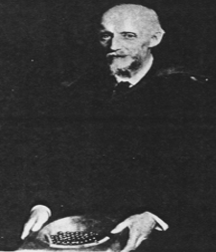


Osborne Reynolds was an English engineer and physicist best known for his work in the fields of hydraulics and hydrodynamics. He gained early workshop experience and graduated from Queens College at Cambridge in 1867. He became the first Professor of Engineering at Owens College, Manchester in 1868. He was elected a fellow of the Royal Society in 1877 and a Royal Medalist in 1888. Reynolds'studies of condensation and the transfer of heat between solids and fluids brought about radical revisions in boiler and condenser design, and his work on turbine pumps laid the foundation for their rapid development. A fundamentalist among engineers, he formulated "The Theory of Lubrication" (1886) and in his classical paper on "The Law of Resistance in Parallel Channels" (1883) investigated the transition from smooth, or laminar, to turbulent flow. Later, in 1889, he developed a mathematical framework which became the standard in turbulence work. Other work included the explanation of the radiometer and an early absolute determination of the mechanical equivalent of heat. Reynolds retired in 1905. His name is perpetuated in the "Reynolds Number," which provides a criterion for dynamic similarity and for correct modeling in many fluid flow experiments. |

All web page HTML © by Richard Culham
Most recent update: 28-03-04